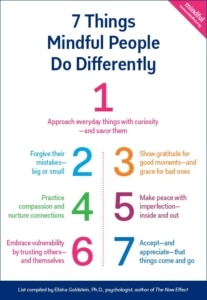Dismantling the Inner Empire
Today for the day after Christmas I want to write a blog that talks about the Spirituality of Christ. In recent years, the troubling realities of living in the world that has come home to roost on many of us. Being one of the only worlds superpowers what is ours to do? As a country that bases its whole existence on democratic foundations, what is ours to do.When Christ came to us his message was simple, Love and non-violence.
( Democratic foundations are the core principles and structures ensuring rule by the people, including popular sovereignty, individual rights (freedom, justice, equality), rule of law, free & fair elections, checks & balances, and an engaged civil society, all working to create accountable, inclusive governance and protect against tyranny. These foundations rely on active public participation, independent institutions, and transparency to build trust and uphold democracy and have nothing to do with political parties)
This disintegration of the world’s foundations today provides us with a profound moral and spiritual decision, just as Jesus talked about for his entire life. The four cornerstones of our internal empire as talked about by many wisdom teachers throughout history are—political, economic, military, and ideological power—which serve to enslave our very spirits and how we look at other communities. These communities can be and are not limited to any color, political persuasion, gender, and so forth. And while the first three cornerstones impose harsh realities on the very bedrock of our personhood, it is the ideological power that is the most insidious, shaping and distorting the minds and spirits of both the outside of us and inside of us What Jesus is talking about in his ministry is about the Roman empire, and using that example how we were to live our life’s. This example of course was not limited to the Roman empire because all world superpowers throughout history have acted like this. Jesus came to us in a time when the Romans happened to be in charge.
This moment in history calls for critical self-reflection. We have been indoctrinated by the very forces that uphold the American Ideal, taught to prioritize profit over people and individualism over interdependence. Such values lead to a disembodiment of God’s love, creating an inner empire in each of us that must be dismantled and rebuilt. Those of us calling ourselves Christians, (and others as well) are called to respond with clarity and love, embodying values that reflect the teachings of Jesus.
The Four Cornerstones of the Inner Empire
The traditional Inner Empire is built upon four cornerstones: supremacy, privilege, hatred, and fear. Each of these elements contributes to the dehumanization of both us and others.
- Supremacy: This cornerstone embodies the belief in our inherent superiority over others. It fosters division and alienation, leading us to view others as less than ourselves.
- Privilege: This refers to the unearned advantages we often take for granted, which we protect or ignore at the expense of marginalized communities, see above. Recognizing our privilege is essential for fostering empathy and understanding.
- Hatred: Hatred manifests as active hostility toward others or even parts of ourselves. It creates barriers that prevent us from experiencing authentic love and connection and understanding.
- Fear: Fear drives us to protect ourselves at all costs. When we fear losing control, status, or safety, we build walls that isolate us from others and from God’s love.
Understanding how these cornerstones corrode our souls is crucial. The question then arises: what can restore our souls?
The Cornerstone of Restoration
In Matthew 21:42, we read, “The stone that the builders rejected has become the cornerstone.” This verse speaks to the transformative power of Jesus, who was a tekton—a builder in the truest sense. As a day laborer, Jesus understood the intricacies of construction, not just of physical structures but of the spiritual and communal foundations we need to thrive.
To rebuild our foundation, we must adopt four new cornerstones: humility, responsibility, compassion, and connection. These practices can help restore our humanity toward ourselves and others, paving the way for a world where, as Pope Francis states, “land, lodging, and labor” are accessible to all.
- Humility: This cornerstone allows us to see one another as equals, fostering deep reverence and openness. It reminds us of our shared existence in the vast cosmos, where we are all stardust.
- Responsibility: Embracing responsibility means being accountable for our actions and becoming stewards of one another and the land. It encourages us to act with integrity and care.
- Compassion: Compassion nurtures empathy, love, and benevolence, enabling us to tap into God’s tenderness for the world. It invites us to extend grace to ourselves and others. Have you ever considered that everyone in the world is doing the best they can with what they know and what they know is not what you understand.
- Connection: Perhaps the most vital cornerstone, connection teaches us about radical solidarity and belonging. It reminds us that when one group suffers injustice, we all suffer. Our sacred interconnectedness calls us to action.
A Call to Courage
My parents went to see MLK in 1961 at Cobo Hall in Detroit and came home and said, we are moving to the inner city, the real inner city. My brother and I freaked out. What did that mean for our lives, our friends and what we had come to think of as normal. So, in and around June of 1962 we moved to Highland Park just off Woodward on Massachusetts Ave and settled in for a life changing experience. Now it was not going to be all bad I thought as there was a public library and Howard Johnsons at the end of the street where a chocolate milkshake could be had now and then with the right amount of change from bottle collecting. But then reality set in, I Iooked around and saw very few people that looked like me, (white) and was not sure how to act at 10 years of age.
I tried to make friends and was looked at with suspicion and caution which at the time did not understand, because look at me, I am a very nice guy. Then the beatings started because I was told this was not my place to be. And while those beatings were not fair or just, I had a choice to make at those moments, was I going to hate or love. Luckily my parents taught me to see the dignity in each person and separate actions from intent. So, I had a leg up on many others and friends, those years molded my soul to see beyond the veil and embrace all of life.
When we want to dismantle the inner empire, we must have the courage to shake the very foundations of our spiritual world. By examining our entitlement, privilege, and positions of power, we can rediscover our true understanding of self, others, God, and the planet. This process requires vulnerability and a willingness to confront uncomfortable truths.
Creating the world we desire begins with ourselves. We must dismantle the inner empires we have built brick by brick, belief by belief. The empire within must fall so that solidarity, justice, and love can rise.
As we embark on this journey of transformation, let us remember the words of Joanna Arellano-Gonzalez, cofounder and Director of Spiritual & Theological Formation with the Coalition for Spiritual & Public Leadership. Her work emphasizes the importance of spiritually rooted community organizing, reminding us that we are not alone in this endeavor. Together, we can build a more just and loving world.
In conclusion, the call to dismantle the inner empire is not just a personal journey; it is a collective one. By embracing humility, responsibility, compassion, and connection, we can restore our souls and create a society that reflects the values of love and justice. Let us rise to this challenge, for the world we want to see begins within us.
This blog was inspired by the writing of Joanna Arellano-Gonzalez who is a cofounder and the Director of Spiritual & Theological Formation with the Coalition for Spiritual & Public Leadership, a spiritually rooted community organizing coalition in the Chicagoland area. Visit their work at csplaction.org.


